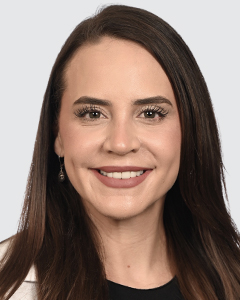Chances are your pregnancy will be just fine, but some women develop preeclampsia or even eclampsia, which can be fatal. Be aware of warning signs, especially if you have risk factors.
Difference Between Preeclampsia and Eclampsia
Both are high blood pressure disorders that can happen during pregnancy. Five percent to 8 percent of pregnant women develop preeclampsia, which in addition to hypertension can cause headaches, blurred vision and swelling of your face or limbs. A higher percentage of women have developed preeclampsia since the COVID-19 epidemic began.
Eclampsia is more severe, causing seizures. If this happens to you, go to an emergency room or call an ambulance; the medical teams know how to treat this effectively. They will deliver your baby, even if it’s earlier than ideal, and take care of you, too.
Eclampsia generally occurs in the second half of pregnancy or up to six weeks after giving birth. It is probably caused by blood vessels, possibly in the placenta, , but nobody knows for sure.
If you do get preeclampsia or eclampsia, you have a higher chance of other health challenges later in life. That includes kidney disease, stroke and heart attack.
Signs You Might Develop Eclampsia
For many women, preeclampsia leads to eclampsia, so if your OB-GYN diagnoses you with risk factors or preeclampsia, take all the recommended precautions to keep this blood pressure disorder under control.
But eclampsia can come on unexpectedly, with no prior symptoms. In fact, 20 percent to 38 percent of women who get eclampsia never show signs of preeclampsia.
In addition to high blood pressure, the symptoms vary and might include one or more of these:
- Frontal or occipital (nerve) headaches that won’t go away
- Blurry vision
- Sensitivity to light
- Nausea
- Swollen hands or face
- Pain in the shoulder or abdomen
- Seeing spots
- Sudden weight gain
- Protein in the urine
Risk Factors of Eclampsia and Preeclampsia
While any pregnant woman might develop these challenges, certain factors can make you more likely than your peers to suffer from eclampsia or preeclampsia.
- Obesity. Women with a body mass index of 35 or higher are 30 percent more likely to develop preeclampsia.
- Ethnicity. Black women in the United States — of all socioeconomic levels — have a 60 percent higher chance of getting preeclampsia and eclampsia than white women. What’s more, Black women who have preeclampsia are 66 percent more likely than others to have a stroke later in life. Other ethnic groups have a higher chance than Caucasians too.
- Young or old. Pregnancy at under 18 or over 40 increases risk.
- Diabetics. Women with diabetes and/or chronic hypertension are at elevated risk.
- Having an auto-immune disease, a pregnancy carrying twins, conceived via in vitro fertilization and having sleep apnea also elevate your chances of developing eclampsia or preeclampsia.
How To Prevent Eclampsia and Preeclampsia
You can take steps to decrease your odds of developing preeclampsia or eclampsia. Most are lifestyle-related, but two are medical. Studies show that taking low-dose aspirin starting after your 12th week of pregnancy might keep these disorders at bay if you have certain specific risk factors. In addition, if you’re from 23 to 35 weeks pregnant and at such high risk that you’ve been checked into the hospital, ask about a blood test recently approved by the Food and Drug Administration. It can determine if you’ll develop one of these issues within two weeks.
Beyond that, take common-sense measures, including:
- Manage your chronic conditions, following doctor’s orders regarding diabetes, high blood pressure and other medical conditions
- Lose weight if you’re obese
- Take prenatal vitamins as directed
- Check that your medications are not contraindicated, meaning that it’s OK to take all of them as prescribed
- Exercise regularly
- Eat a healthful diet high in fruits, vegetables and grains, and low in animal fats
It pays to learn what your risk factors are and take every relevant precaution. That will increase your chances of having a healthy pregnancy and giving birth to a full-term healthy baby.




